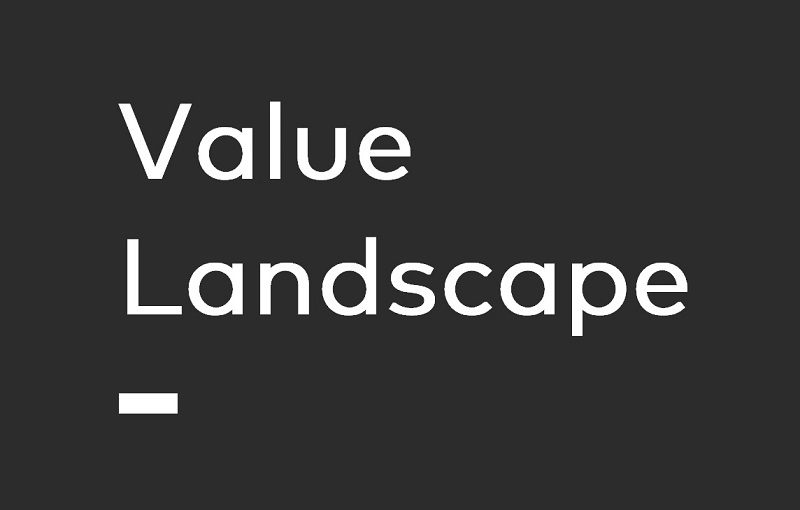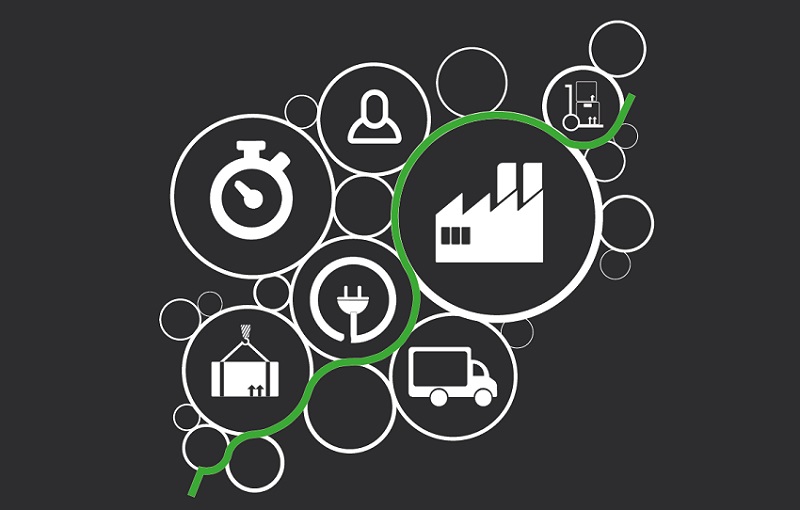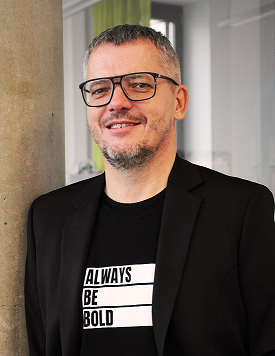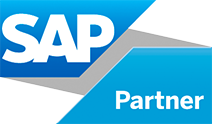The Value Landscape
A Value Map Provides Orientation Help
Digital transformation is more than just Industry 4.0 and it certainly doesn’t stop at the factory gate. It represents a never before seen business model, new market perspectives and business innovation. Andreas Jamm, managing director of BOLDLY GO INDUSTRIES, and Dr Winfried Felser, managing director of NetSkill Solutions explain how important it is to focus on value added and distributed and which approaches can be helpful.
Like all innovation, digital transformation, with all its features and facets, divides the camp into fans and critics. The book “Illusion 4.0 - Germany’s Naive Dream of the Smart Factory”, written by Professor Andreas Syska and published in summer 2016, played into the hands of the latter, making it clear that Industry 4.0 was not able to convince all sceptics. Among other things, technical orientation without value orientation and the confinement “to the factory gate” are criticised. Conversely, a larger overall picture is being sought that also includes the social implications and, above all, the customers and their value added.
Recommendations for action with a realistic background
Despite all of the promises of the efficiency of Industry 4.0, many companies still need to be of. Economy and Industry 4.0 approaches. The reason: Until now, both the potential of the complete value added chain and the transition of the business model have not been sufficiently considered and communicated. Only after such an overall view can the optimal meaning and value of a business transformation be seen and then meaningfully prioritised. From this extensive criticism of the current problems with Industry 4.0, recommendations for action can be uncovered:
New Focus 4.0: |
|---|
|
Value and value added occupy centre stage
Those looking for a more collaborative network economy should also act in their interests when it comes to realising Industry 4.0 projects. Therefore:
New Approach 4.0: |
|---|
|
What to do next
Above all, the new focus on value and value added also means that we must re-interpret Industry 4.0 and understand it in a new light. The initially dominant, technical focus on “Industry 4.0 = Internet of Things (IoT)” and a few networked machines needs to be outgrown to ensure ongoing success, since technology is not an end in itself. Instead, new value creation that is in alignment with the new economic parameters must take priority as the essence of Industry 4.0. In simple terms, network based, collaborative added value – often within the framework of virtual platforms – is replacing the linear pipelines in an Economy 4.0. That is the Essence 4.0, while technology is, first and foremost, the enabler for the new added value.
Digital network economies have consequences
In order to retain competitiveness while also recognising new market opportunities and being able seize them, creative rethinking towards innovative and even disruptive business models is urgently needed. End-to-end oriented, consistent user centring is becoming more important than ever before with increasing transparency and multilateral market access. Companies must ask themselves the following questions: What does the digital customer want and upon what do they and their sphere of influence put value? Possible answers can be: direct, simple and immediate access to products and services, individualised content and services from a sustainable context and all that at the best price.
However, this does not come without consequences for organisational structures which must be correspondingly capable and compatible in terms of structure in order to be able to dominate the complex new markets. Silo cultures or those with distrust in supply chains are no longer an option.
Implementing Industry 4.0 in the network
A new culture is not just critical for the new economy but in itself is also the essential basis for the collaborative (internal and external) transition process. In order to successfully recognise new solution patterns and be able to overcome old ones, it is recommended to draw inspiration collaboratively in order to better understand the network economy and its specific added value. This also includes “going out and actively networking” (e.g. to events, workshops & bar camps etc.) in order to learn from opinion leaders and innovators and, where possible, to collaborate with them. This is how new yet already proven value paradigms are directly tested and how added value is generated for everybody thanks to efficient teamwork.
Be brave and get started
Sometimes you win if you just have faith and get started. By now, there are a sufficient number of tools and technologies in the market. Now it is a matter of iteratively testing them in order to familiarise oneself with the basic technical equipment and methods of the new, digital network economy, to begin initial cooperation and to set up prototypes and pilot projects. For example, co-working spaces, digital labs & incubators, among other things, can take care of the creation and maintenance of new network hubs. Potential value from digital networking always means taking a close look at and learning from other sectors that are already taking on pioneering roles in certain areas with curiosity and openness.
Valid support is needed
For such networking, however, companies also require orientation assistance that primarily integrates the drivers of value and which demonstrates practically tested solution concepts. Value Landscape 4.0 takes on exactly this challenge. “There is currently a lack of integration of the entire value map and the interaction of the previously separately considered areas such as supplier performance and customer satisfaction for example”, explains Andreas Jamm, founder and CEO of BOLDLY GO INDUSTRIES. He goes on to say that “by initiating Value Landscape 4.0, we want to invite interested companies to discover and take advantage of their potential value in the age of Industry 4.0”. It is all about consolidating internal, external and heterogeneous data and understanding the links of one’s own value added chain as part of a superior value added chain for value analysis.
Value and business orientation with Value Landscape 4.0
Fact: The digital world, with its new network economy, demands end-to-end based business models in order to recognise all potential value. Compartmentalised, functional process flow optimisations, such as the shortening of order approval processes, for example, in order to secure discounts and deductibles, are no longer enough. It is necessary to identify and exploit potential value across functions, departments and the company through networking, transparency and data availability. This is how the manufacturing industry sees large future potential added value in individual mass production and so-called batch sizes of one. In order to be able to offer this flexibility at realistic market prices, however, companies need to initially invest, with the help of IoT solutions, in the development of company-wide transparency of the networked value added chains as well as in increasingly self-controlled automation between logistics and production processes.
The new Value Landscape approach continues
The Value Landscape 4.0 approach also assumes that business models and processes in dynamically-complex environments should be agile and adaptable. The structural logic of the model therefore leans on other “new business models” such as the Osterwalde Canvas business model but avoids the notion of rigid, definite areas in its characterisation. An organic, almost “foam like” depiction of the model is therefore more suited to locating and networking identified drivers of value. The following sketch shows what the Value Landscape 4.0 and the differently illustrated innovations look like with Focus 4.0:
Thus the potential values Individualisation 4.0 and Co-Creation can be found in the area of customer orientation for example. Providers of product configurators such as camos see enormous potential for additional sales i.e. additional added value, completely separate from efficiency advantages, simply from better exploitation of customer wishes leading to more comprehensive individualisation.
The service dominant logic is an economic view of the exchange between company and customer with the focus on services. It enables additional potential value by expanding products and services all the way up to complete business models and service platforms. If you only quote predictive maintenance and Uber as examples of potential value in the digital economy, you are reducing the enormous potential to just two alternatives which, through redundancy, have become relatively unexciting.
A must: Collaboration 4.0 for the Economy 4.0
All companies looking to expand their horizons and wanting to learn comprehensive perspectives are welcome to join the initiative. To do so, please contact the authors of this article.




